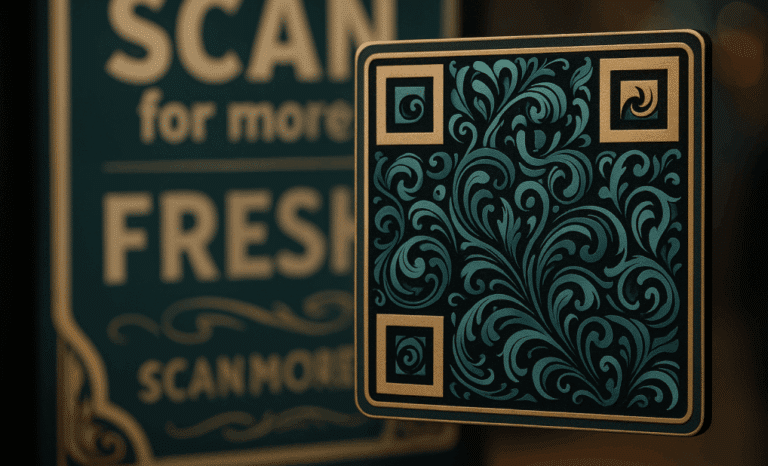In today’s marketing landscape, QR codes are everywhere—but they no longer need to be dull, black-and-white squares. With the rise of artistic QR codes in advertising, brands are finding new ways to grab attention, spark curiosity, and bridge the gap between physical and digital worlds. This new wave of creative, AI-generated codes is changing the game for marketers across various industries.
Why artistic QR codes in advertising work
At their core, QR codes offer a simple function: quick access to digital content. But in a crowded visual environment, a generic QR may be overlooked. Artistic QR codes add visual interest and blend seamlessly with brand identity, making it more likely that consumers will notice them and take action.
Studies show that well-designed QR codes increase scan rates and engagement. By customizing their appearance, marketers can align QR codes with the tone of a marketing campaign and encourage users to interact.
From functional to fabulous: the evolution of QR codes
Early QR codes were purely utilitarian. Their purpose was to store data and provide a scannable link—nothing more. But with advances in design tools, QR code generators, and AI-generated QR codes, brands now have customization options that transform QR codes into eye-catching elements of their campaigns.
Using Stable Diffusion and similar AI models, today’s artistic QR codes incorporate textures, imagery, and even branded elements. The result? A piece of QR code art that’s both functional and visually compelling.
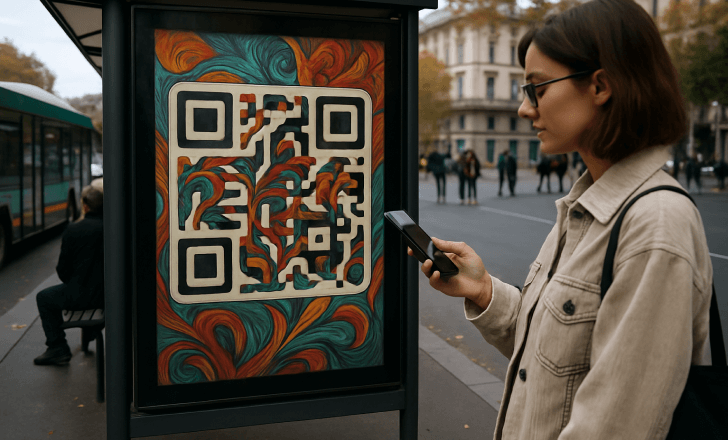
Seamless integration with brand visuals
An important benefit of artistic QR codes is the ability to blend into the design of product packaging, print ads, coffee cups, business cards, or any physical surface. This seamless integration removes the visual friction often caused by standard QR codes and supports stronger brand storytelling.
For example, Burger King has used artistic QR codes on tray liners and packaging to promote limited-time offers, while Coca-Cola has experimented with creative QR codes linked to augmented reality experiences.

Ideas for incorporating QR codes into advertising
Marketers today are using artistic QR codes in innovative ways:
- Adding QR codes to product labels for critical information or discounts
- Printing QR codes on bus stops or billboards for location-based promotions
- Including codes on business cards for instant contact saving
- Using QR code art in retail stores to create interactive experiences
- Enhancing email marketing campaigns with scannable codes for mobile users
The possibilities span almost every type of advertising.
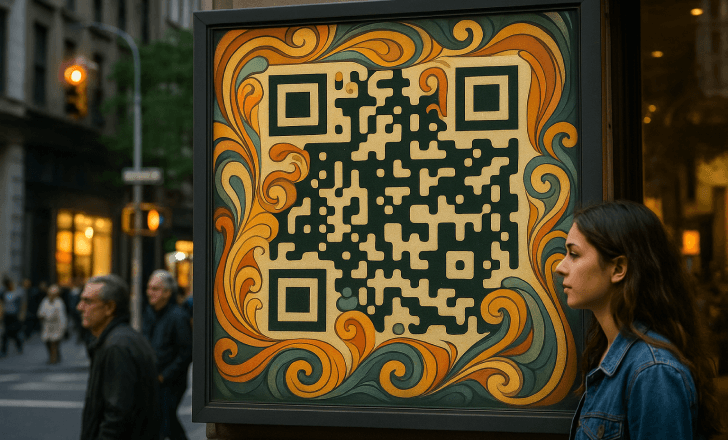
How dynamic QR codes enhance flexibility
Beyond their artistic value, dynamic QR codes give marketers the ability to change the destination URL without reprinting. This makes it easier to adjust offers, track performance, and fine-tune marketing objectives.
A dynamic code on a coffee cup or store display can be updated weekly with new promotions. This adaptability turns QR codes into a powerful tool for engagement and sales.
The rise of AI-generated QR code art
AI tools like Stable Diffusion are now helping designers create stunning AI-generated QR codes. Marketers simply provide a prompt, and the system generates QR variations that balance creativity with scannability.
At QR Code KIT, marketers can choose from artistic templates or create custom designs, preview them on-screen, and test their scan reliability—ensuring both beauty and function.
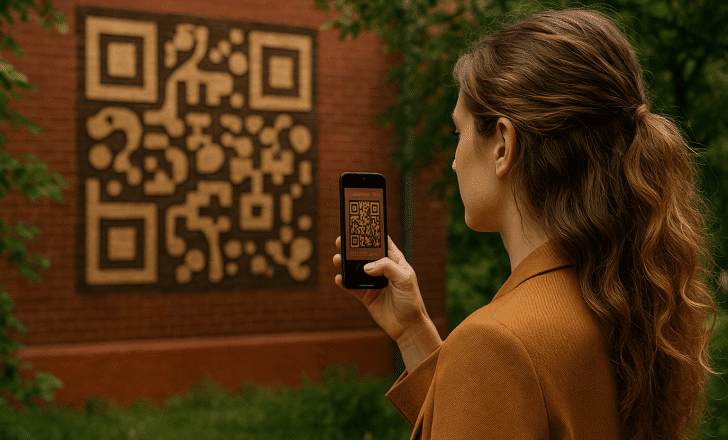
Real-world examples of artistic QR codes in advertising
Let’s look at how brands are pushing boundaries with artistic QR codes in advertising:
- A fashion brand uses QR code art on store windows to reveal behind-the-scenes videos.
- A craft beer label incorporates an illustrated QR into the design, linking to limited-release promotions.
- A tech startup prints QR codes on conference swag, driving traffic to an exclusive offer page.
- A fitness chain adds AI-generated QR codes to posters, triggering an augmented reality workout demo.
Each example highlights the potential of QR codes to elevate the customer experience.
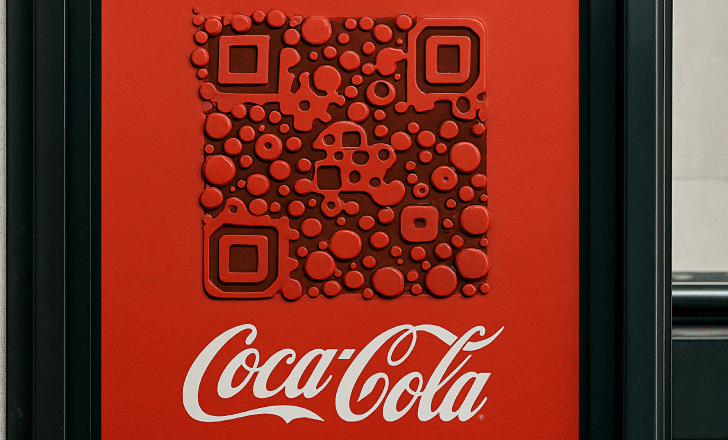
How to create a successful QR code campaign
If you’re looking to experiment with artistic QR codes in advertising, keep these best practices in mind:
- Customize: Align the code’s look with your brand.
- Test: Always check that the code scans on a variety of smartphones.
- Print at high quality: Printing QR codes at proper resolution ensures reliability.
- Place thoughtfully: Think about location and visibility.
- Add a clear call to action: Tell users why they should scan.
Are artistic QR codes more cost effective than other options?
Compared to some forms of interactive marketing, using artistic QR codes is relatively affordable. You don’t need to build a mobile app or redesign an entire campaign. You simply add QR codes to existing materials—from business cards to product packaging to store displays.
Platforms like QR Code KIT make it easy to generate multiple versions, supporting various industries with scalable options.
How do artistic QR codes improve customer experience?
When done well, artistic QR codes engage viewers and enrich the customer experience. A beautifully designed QR feels like an invitation, not an interruption. And by linking to video, augmented reality, or exclusive content, you can create immersive experiences that connect with consumers emotionally.
In short, artistic QR codes in advertising don’t just raise awareness—they deepen engagement and drive action.
What industries benefit most from artistic QR codes?
While artistic QR codes in advertising can be used across various industries, some sectors are seeing particularly strong results:
- Retail: Blending codes into packaging and displays for promotions.
- Hospitality: Adding QR code art to menus and coffee cups to enhance the dining experience.
- Events: Using creative codes on tickets, posters, and swag to link to event info and offers.
- Luxury goods: Integrating elegant QR code art on packaging to drive VIP experiences.
Each of these industries benefits from the ability to engage viewers and provide quick access to digital experiences.

Can artistic QR codes support augmented reality campaigns?
Absolutely. One of the most exciting uses of artistic QR codes is linking them to augmented reality experiences. Whether it’s an AR try-on, a product demo, or an interactive game, artistic QR codes in advertising can serve as an elegant entry point into immersive digital content—no app download required.
How do artistic QR codes compare to NFC or other technologies?
Both NFC tags and QR codes help connect physical and digital worlds, but artistic QR codes have the advantage of visual storytelling. They are easier to place (on paper, packaging, or displays), and consumers are already familiar with how to scan QR codes using their smartphone cameras—no need for extra hardware or apps.
For marketers seeking cost-effective, flexible options, artistic QR codes often deliver greater versatility and impact.
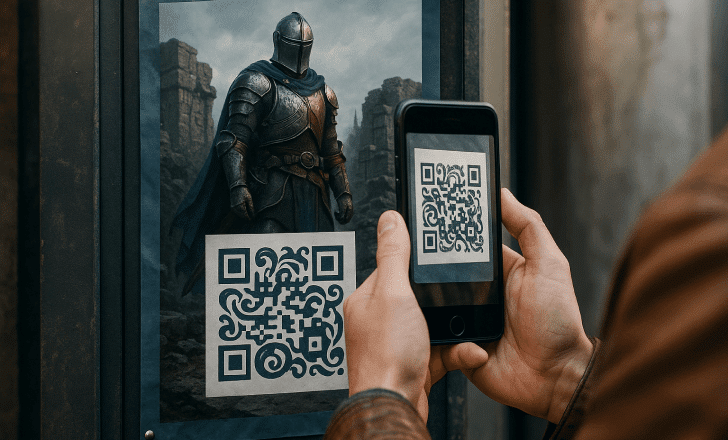
What tools can help me create artistic QR codes?
Modern QR code generators with built-in AI features are the best choice for creating high-quality artistic QR codes. Platforms like QR Code KIT let you input prompts, select styles, and test scan performance, giving marketers an intuitive way to produce stunning QR art for any campaign.
How can I measure the success of my artistic QR code campaign?
To evaluate the performance of your artistic QR codes in advertising, track key metrics such as:
- Number of QR code scans
- Conversion rates (actions taken after scan)
- Dwell time on linked content
- Engagement with augmented reality or video content
Using dynamic QR codes helps capture and analyze this data, enabling marketers to optimize their marketing objectives and refine future campaigns.
